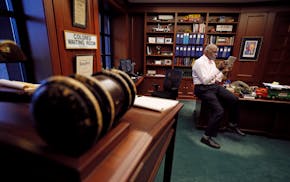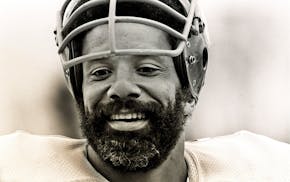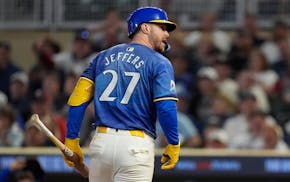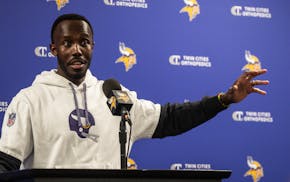We know it's big. We know it's expensive. We know it's fancy.
It likely will take months, maybe even years, for the impact of the hulking new U.S. Bank Stadium on the east edge of downtown Minneapolis to fully crystallize as Minnesotans and the building get acquainted.
To be certain, the sleek, angular stadium has dramatically altered the skyline of Minnesota's largest city and played a key role in the evolution of a burgeoning neighborhood. It has caused divisions between dueling interests and ruffled its share of political feathers for the 15 years it has taken to move from concept to reality.
But it also has brought renewed national attention to the state and has already attracted two of the world's biggest sporting events — the 2018 Super Bowl and 2019 Final Four — that will amplify Minnesota's visibility and increase local pride.
At more than $1.1 billion, the stadium, built as the new home of the Vikings, is the largest public-private investment in state history. The state paid $348 million and Minneapolis paid $150 million in public funds toward its construction. In return, the Vikings organization, which initially paid $477 million — with more than $100 million in additional costs later — promised to use the 64,500-seat stadium for the next 30 years.
And while the 1.75-million-square-foot structure is unquestionably striking, it's part of a larger renaissance story — one the Metrodome, which used to occupy the site, could never spur.
"It is clearly a different time and place than when the Metrodome got built. The stadium is a very significant component of what is occurring in the neighborhood," said George Sherman of Sherman Associates, a prolific developer in the area.
Since the Metrodome opened in 1982, there's been a significant shift in the Twin Cities real estate landscape and the city's governing philosophy. At that time, Minneapolis was focused on strengthening its central urban core, only a few blocks wide and several blocks long and centering on Nicollet Mall, at the expense of the surrounding areas. All of the windswept surface parking lots were banished to the east end of town, near the stadium.
This barren environment made the Dome an island that no one, including restaurants, shops and residents, wanted to be on apart from event days.
The new stadium's timing was much better. Work began just as the nation, and Minnesota, was coming out of the Great Recession. This meant people were looking for new housing, developers were looking for land for new buildings. This, coupled with the draw to denser, urban living, drove revitalization in downtowns across the country.
City governments, including both Minneapolis and St. Paul, responded to these trends by recognizing the impact urban design can have on neighborhood vitality and livability. Today, the neighborhood surrounding the stadium — recently renamed East Town — is one of the fastest-changing districts in the city.
Wells Fargo has invested $300 million in two 17-story office towers that have brought foot traffic from an additional 5,000 workers during the day. A key component to all these developments was the parking ramp that is used by Wells Fargo office workers Monday through Friday and stadium-goers on the weekend.
Several public and private stakeholders have invested millions of dollars into a 4.2-acre park that abuts the towers, the stadium and the light-rail line.
Ryan Companies, which built the towers, is also codeveloping with Excelsior Group three separate apartment buildings that will line the park and increase pedestrian levels in the neighborhood. And adjacent city blocks are exploding with hotels, condos, apartments and restaurants.
"I fully understand people who don't want to participate in funding stadiums, but I chose to engage an opportunity to create tax revenues. … There has been no single tangible way to get anything going there other than this," said R.T. Rybak, the mayor of Minneapolis when the deal was made.
According to the Vikings leadership and Minnesota Sports Facilities Authority, which oversees the stadium, the space could host non-Vikings events 355 days of the year. State-of-the-art technology will change the gameday experience, and the light rail that passes by will change how people travel to and from the stadium.
"It's very large, but there was tremendous intention connecting it to the community," Rybak said. "No one has come close to building a football stadium as a part of a neighborhood. Whether you have a ticket or not, you can also be a part of the excitement."
What is the 'House settlement,' and what does it mean for the Gophers and NCAA?

Souhan: Anxiety and depression in the NFL helped inspire Lindsey Young's children's book

Reusse: Country boy Jim Marshall never lost his lust for life

Twins open homestand with loss to Blue Jays, Jeffers ejected after critical call

